The Apex Interviews George Howson of Petroleum & Co.
George Howson is the founder of Petroleum & Co., a studio that specializes in creating emotional automotive films. He has worked with the likes of Hagerty, Pendine Historic Cars, Ben Mather, Charabanc Club, Moss Automotive, Classic & Sports Finance & Goodwood to create videos that are more art and storytelling than car ads or branded content. While many people in the beginnings of their film or photography careers today focus on modern supercars or modified cars, George has always been passionate about classic cars and brings that passion to the films he makes.
We spoke to him about about what it takes to successfully capture the emotion and sense of speed in automotive films; some of the most iconic car chases ever to be captured on film; what it was like being at Bicester Heritage at the beginning; and how he managed to 'blow the bloody doors off' at Stowe School... with the Headmaster's permission!

What came first, your love for filmmaking and videography or your passion for cars?
I've always loved film and I've been obsessed with it since I was a very young boy. What's quite interesting is that while I came up with a lot of ideas and wrote a lot when I was younger, eventually I got to a stage where I stopped. I went off to University and did other things, including studying design. Obviously, I still enjoyed film, but I never really thought of it as a career.
The car thing has been a part of my life for a long time. I've always liked cars, but then it was really kickstarted when Bicester Heritage started up. It's based half a mile away from my house, so I was exposed to their concept at the really early stages, from when I was at University. That really helped develop my car passion. I went to university and all that, with the plan being that I was going to go into the City. Whilst I went back home and waited for interviews, I ended up doing a little bit of filming with my brother and it’s kind of snowballed from there, really.
Was there a particular movie or film sequence that has inspired or continues to inspire you?
It sounds like a cliché these days, but I was brought up on the Bond films. My mum must have had a stash of the VHS somewhere but every week or so she would bring a new one out to watch. I'd just be blown away. I remember the bizarre chase between the mid-60s DB5 and the, at the time, brand new Ferrari 355 in GoldenEye. It was one that entranced me because, although it was absolutely, unfathomably unrealistic, it was a lovely way of showing two different cars being used alongside one another, which I guess is sort of a metaphor for a shared passion, no matter your tastes. That one always stuck in my mind, despite some rather cheesy lines being said throughout it.
What really interests me is when I watch a film like that, and most recently, I did it with Le Mans ’66, as soon as I watch it, I dive into the Behind-the-Scenes to figure out how they did it and what the car camera rigs were like. I went through an obsession of researching Steve McQueen's camera car rigs from when he filmed Le Mans and that sort of thing. If you haven't seen the camera cars he entered into the race, go look at them.

It’s always just interested me as to how these became really iconic. Because in my view, anything that becomes artwork is often born through someone's passion. Steve McQueen started production on Le Mans (1971) without a finished screenplay. He just really wanted to make a proper racing movie. The actual storyline is quite weak but the visuals are utterly captivating and were ahead of their time. I think that’s purely a result of the driving force behind the lust to make something special. You could argue it's the same story with ‘Grand Prix’ (1966), the quality of onboard footage in that film is wonderful. If you really enjoy this sort of stuff, lookup how Christopher Nolan mounted iMax cameras to Spitfires for Dunkirk (2017) - the strive for the ultimate quality is incredible.
I also like to see how the technology develops over the years. You see all these funny videos and pictures of Graham Hill with an 8mm camera strapped to his helmet. It's funny how back then they were still thinking of how best to film different angles and how best to emotively capture something with what they had. Now we're doing the same thing and we want to push it on again with the technology that we've got. It's just all fascinating to me.
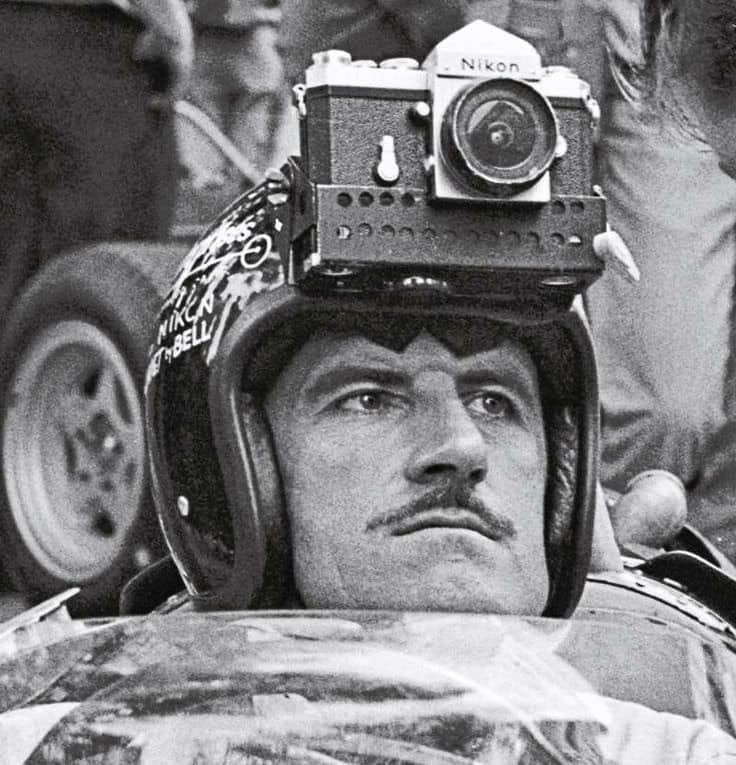
I saw Ronin again for the first time in a while last week and it’s an interesting one because it's not necessarily a car film, but it's gone down in history as having one of the greatest car chases of all time. Part of it is the fact that they’re using ordinary cars but also the way they film it. There’s a combination of fly-by shots as well as brilliant angles focusing on the wheels as they're turning around corners and that kind of thing.
That’s a prime example. I would have loved to have been in the writer’s room when they were thinking, “okay, we're going to use two very ordinary cars, so how do we make this the most exciting sequence out there?” The sequence specifically when they're driving through the tunnel with the oncoming traffic - the choreography behind it is a work of art.
They didn’t have the luxury of fast cars there, because you’ve already half won the battle when you’ve got a fast, loud car in those sorts of sequences. So, without that they had to work with (fairly) ordinary cars; a BMW M5 and an old Peugeot 406. Notice how there's also no music and no OTT special effects. All reasons for why it’s so effective, builds tension and makes the chase seem plausible.
It reminds me of a really good chase scene in the recent Tom Cruise film, Mission Impossible: Fallout. They’ve got this amazing sequence with a classic, green E28 BMW and that makes it much more memorable. You can forget the Fast & Furious chases but that one, in my mind, is memorable because it’s a more ordinary car and it shows off more skill from the driver to either evade or chase someone when you’ve got a slower car. It also shows the skills of the videographer because to make two ordinary cars chasing each other look exceptional is a more challenging job.
I’m not putting down the chase with the DB5 and 355 (it’s brilliant) but making those two cars look good chasing each other on a mountain road isn’t that difficult. However, when you’re dealing with not-as-good-looking cars, that don’t sound as good and nowhere near as fast then you’ve got to think. You’ve got to film the sequence in a way that makes the cars feel faster. In the Ronin chase specifically there’s a lot of onboard stuff, intense car front end close ups and low shots that give a real sense of speed. You also cut to great actors and then some funny things like really quick gear shifts, which don’t look like they’d be performed in a car that could be a Parisian taxi, but the way it’s all been filmed is highly enjoyable.
A lot of your films capture that sense of speed brilliantly. How do you go about capturing that on film? Has it been helped with the introduction of more consumer level equipment like drones & onboard cameras?
There are a few things which you can use in your arsenal. Usually quick cuts help, but in terms of composition and how you organise your camera angles & rigs, generally lower is always a lot faster because the car seems more imposing to the camera. Beyond that, if you can put things in the foreground which are either going the other way or rush past the lens, with the car in the mid- or back-ground, it often gives a far better perception of speed. If you’ve got a fence or a line of trees and you’re filming on the other side of it, it’s another thing for your eye to judge the speed against. On top of this, use sound design to your advantage. Because of how an engine revs, it builds up to a gear change, so build tension in conjunction with that and utilise mechanical movements, like carbs opening or fan belts moving as cutaways. If you’re just doing normal car tracking then you’ve got to be going really fast to get that sense of speed across naturally. But nothing can beat true speed because speeding up footage is usually obvious! Just watch The Cannonball Run intro sequence - although I do love that opening helicopter shot!
That brings to mind C’etait un Rendez-Vous that was actually filmed using a Mercedes 450SEL 6.9 but was dubbed over with the sounds of a Ferrari 275 GTB.
That film shows how effective having that camera low is, because so much of the screen is the changing of the road surfaces, and every single bump or paving slab, there’s the white line that is rushing straight underneath you. It gives you that real perception of speed while the actual driving style gives off that famous mischievous sense of rebelliousness, especially when it’s linked to a great soundtrack. Although I think someone counted and the number of gears would have been close to 55?
Simon Kidston did a tribute film the other day which was really cool.
That’s what I find interesting, when that Rendez-Vous film was made, Claude Lelouch would have just said, ‘alright, come on, let’s do this’ and cracked on with it, probably not thinking much more about it. Yet here we are today, some 50 years or so later thinking of it as such an incredible piece of art.
That’s what interests me – do people know they’re producing something which is going to go on to be remembered?
All the refences so far have involved classic or ‘young timer’ cars. How did you get into filming classic cars, especially when the majority of our generation is getting into photography or videography through supercars or modified cars?
The interest was always there, but it manifested itself when Bicester Heritage started up and I was working around there. That would have been about 6 or 7 years ago now, during my second year of University, but there started to be a lot of activity around this old RAF base, which no one really knew about.
I dropped in one day and asked what they were doing, and they told me about the plan to turn it into a ‘classic car business park’. I was thinking to myself ‘this sounds pretty awesome’, so offered my help and then during my summer breaks I ended up helping out around the place and did things like mowing the lawns. At that point we were still ripping boards off the windows because this place hadn’t been touched in 30 years. It was mental but the place was a tip and to see what it looks like now is incredible.
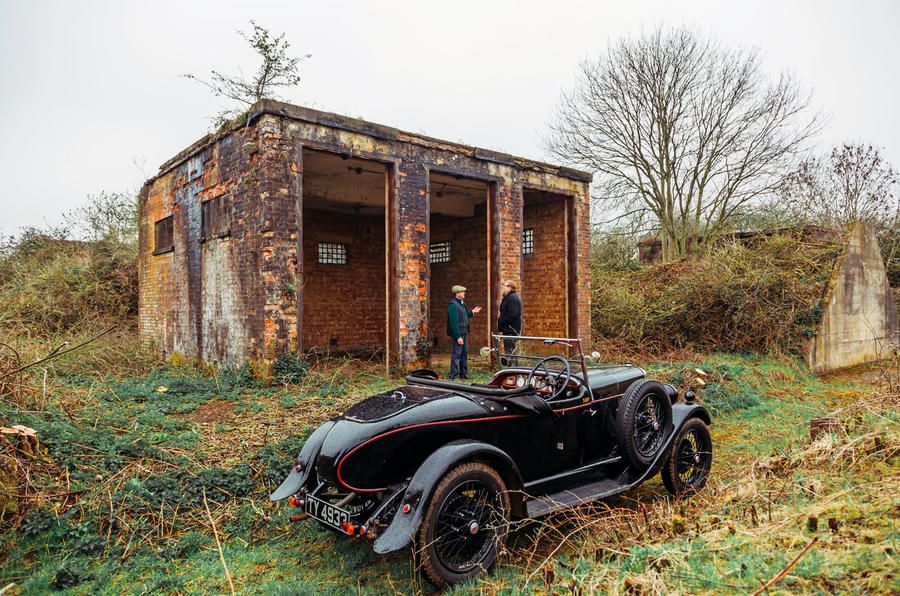
Even at that very early stage they had all these classic cars flying about. People were coming to shoot cars there, there were vintage car rallies & tests, and a lot of the management, including Dan Geoghegan, the Chief Executive, would have their cars about. It was cool because I found them really interesting and it exposed me to a lot more old cars as opposed to new ones.
There’s just something interesting about old cars because they've all got stories.
Don’t get me wrong, I do love modern cars, especially their design as I did a placement with Jaguar-Land Rover while I was at university studying design. Modern car design is fascinating, but I like the charm of what it must have been like back in the day, to have total reign over what they produced. While at the design placement at JLR I remember there was one guy whose job it was to move the reflector plates, which you legally have to have on the rear bumper, on the back of the new Range Rover SVR. He took four months to reposition them because it wasn't legal to the stringent requirements. Then you look at the E-Type and think, Malcolm Sayer penned it as one man’s vision and pretty much a free reign.
It was more of a direct translation of a vision into something you could drive on the road.
Exactly, and it must be so much harder now, compared to what it was like in the sixties. I do really like, and I'm impressed by, the awesome nature of totally new technology. That being said, I've just always had a bit of an interest in how raw old cars are.
A lot of the reason why people love classic cars is that story element you mentioned before and it’s something you highlight on your site because you describe your films as ‘emotive automotive cinematography’. How do you go about capturing that and why do you think it’s so important to bring that emotional & human element out in a car film, especially in a category dominated by ‘car-porn’ that consists of tyre-smoke & shifting gears?
If you’ve got a car that’s 60 years old, doesn’t really matter what car it is, then it’s going to have 60 years’ worth of history and stories to tell. That’s 60 years of people driving it, selling it, racing it and displaying it. Every car has got a story and there are just so many crazy stories about these old cars around how they got found or why the owner bought them.
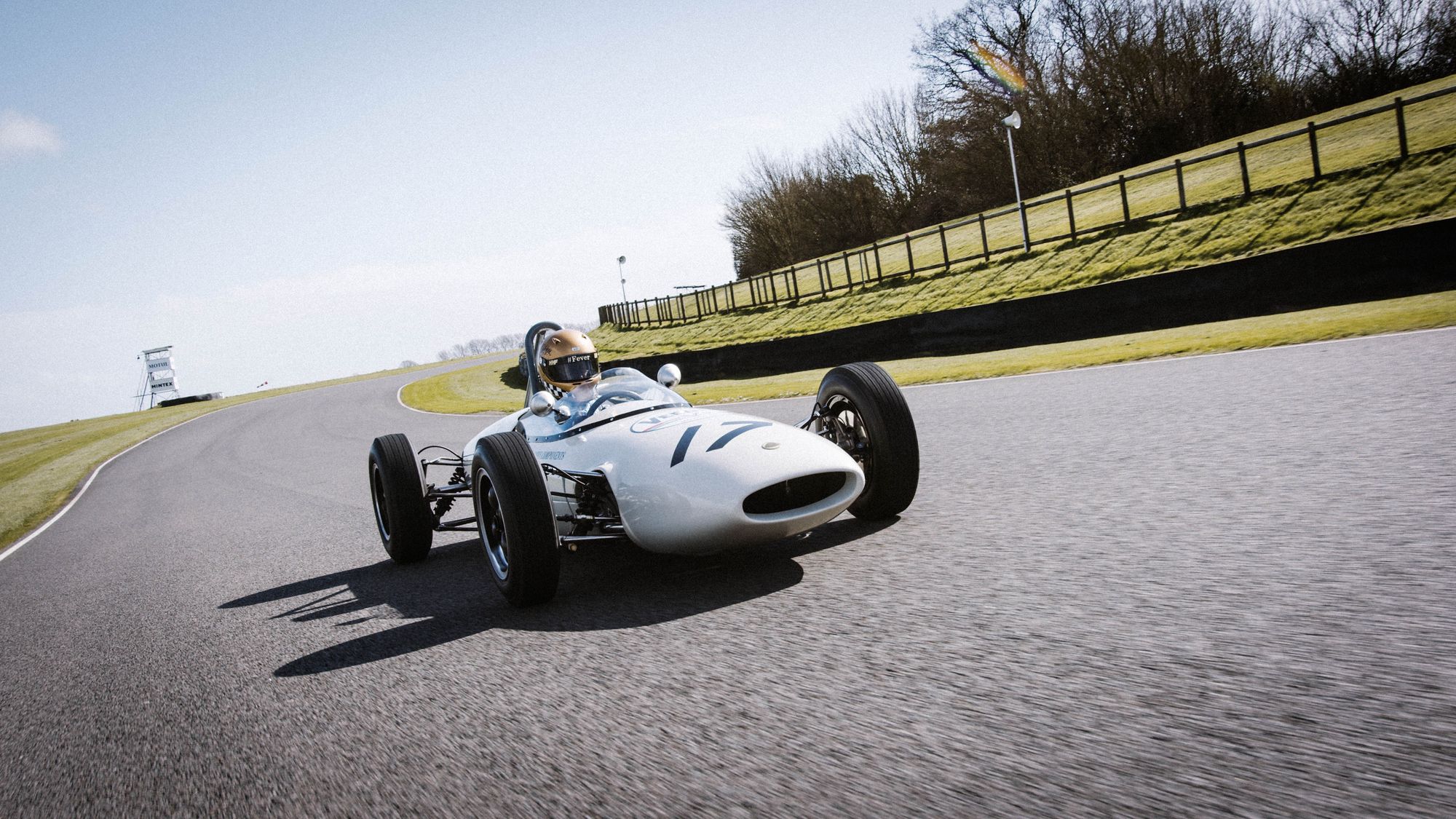
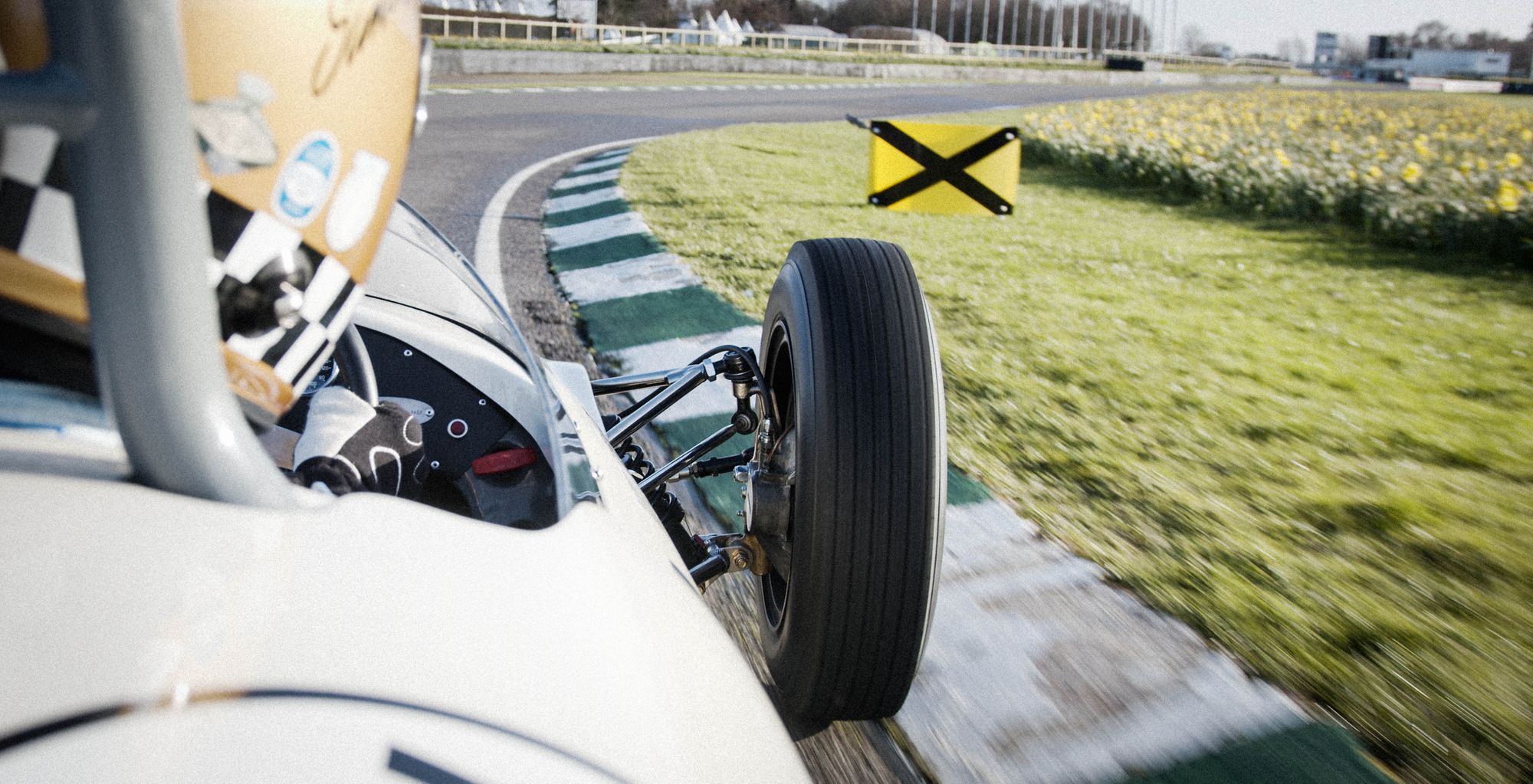
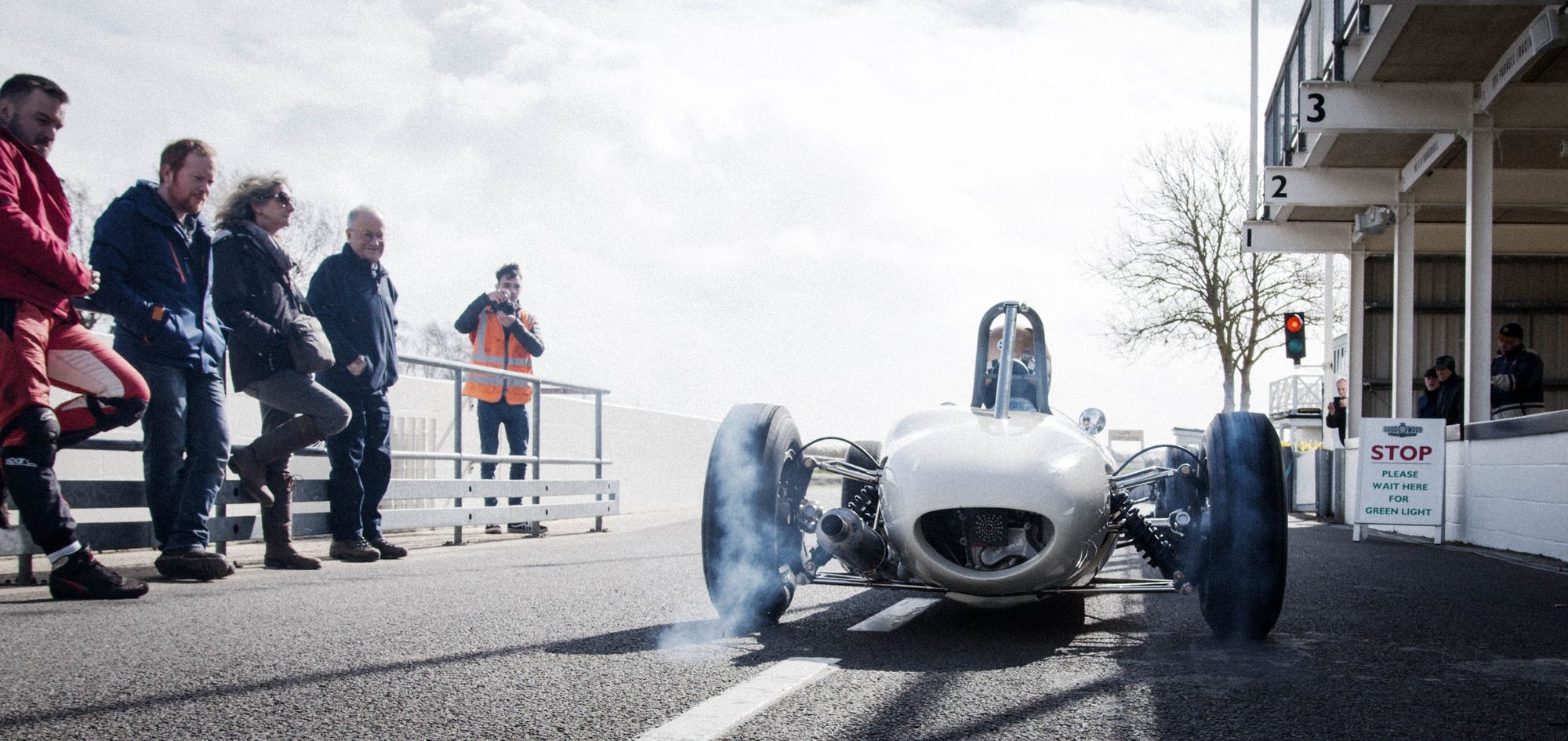
We just finished doing a little documentary for Goodwood with our friend Simon Diffy about a little Lotus 20 that he's got, a little Formula Junior car. These cars were raced by a certain type of person back in the sixties and so it’s basically impossible for them not to have a history and not to have something interesting about them. In this case, it was driven by John Paul Getty and it was owned by Peter Warr who was the Lotus Components Manager and went on to be the John Player Special team manager. That’s just that car, but I'm sure you could go and look at another Lotus 20 which will have another fascinating history behind it just because of the nature of the people that owned them. And it's the same with a vintage Rolls Royce – there aren't going to be many that have boring histories.

It’s very much in the same vein as the brilliant film with Hagerty about the MG A at Christmas. Was that based on a true story?
Yes, it was in the United States. Hagerty did a piece about finding someone's old MG A and it showed just how powerful these emotional attachments to cars are. It's not just the metal of the vehicle. It's not just the physical car. It's the associated memories that you have with it. It's essentially a memory bank. Reading through the comments on that specific film, it was amazing how many people started talking about their experiences and their stories that were similar.
What has been your most memorable shoot so far?
We’ve been really lucky to work on a lot of films, in part because of where we are and the people that surround us. I think the Italian Job film we did was probably the most memorable shoot on so many fronts because it was the first one we did with a crew of nine or 10 people at the end of it, where everyone has to fit together. It was also the first where it was properly storyboarded out. A lot of other films I come up with on the day, or the day before, especially when in our early films with Ben Mather. We would come up with an idea then go and shoot it which is always great fun. We had a lot of fun doing that, but this one was properly storyboarded from front to back and it involved Paul Swift and all his team. So, it was also the first time that we had professional stunt drivers behind the wheel, which was amazing.
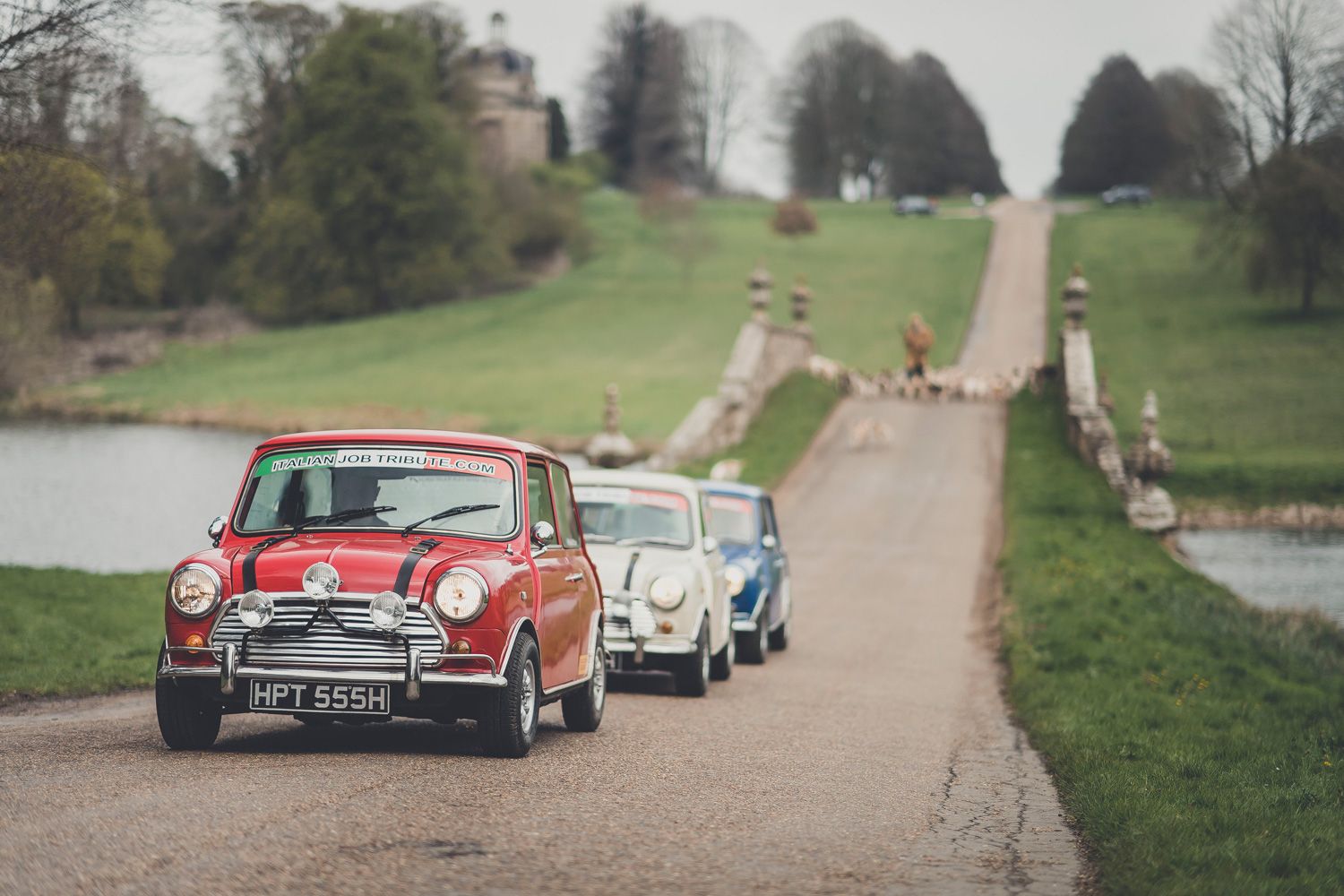
I couldn't really fathom how good they were until they started driving. We were working with Marcus Atkinson, who was the Marketing Manager at Hagerty at time and is now their MD, and he's got a great vision for this sort of stuff. He went to Stowe School as well, which tied in really nicely.
What made it even more special was this film was released on the Stowe School Leavers Day. Every year the school has a leaving do where they have a massive marquee, give out prizes and also have someone from the school come back and talk about their time at Stowe, as well as what they went on to do. That year it happened to be the sixtieth anniversary of the Mini and the fiftieth anniversary of The Italian Job, so they had Michael Deeley come and speak. He was the producer of the Italian Job, as well as Blade Runner and The Deer Hunter. Marcus at Hagerty said we should produce a film that can involve Stowe as well as the Italian Job Minis as a tribute to the movie, as well as the school. Deeley enjoyed it very much, thank God.
Somehow, we managed to persuade the powers that be, and even more impressively the National Trust, to let us shoot there. All of the driving stuff had to be filmed in a day and that was incredibly stressful because they said that we could only film on certain parts of the site in accordance to when the National Trust would permit. So certain scenes could only be shot before 9AM and the bridge only between 11 and 12. It was a busy day with a lot of firsts, but it was a great time.
Speaking of firsts, you mentioned that this was also your first time with pyrotechnics.
Well, the famous saying from the movie is ‘You're only supposed to blow the bloody doors off’, and we really wanted to have a nod of the hat to that. I did a little bit of research and found a source of theatrical stage pyrotechnics but had 0 experience with them. We wanted to do the scene out front of the main house, they arrived very late, so I needed to figure them out quickly.
There was no one there so I was setting them off on the Stowe School front lawn with the Stowe representative there giving us the ‘ok’. I thought we had about two hours to film that whole scene but then just as I figured out how to use the pyrotechnics properly, the representative confessed that he’d messed up and that there was actually an exam starting in 15 minutes in the hall directly above where we were.
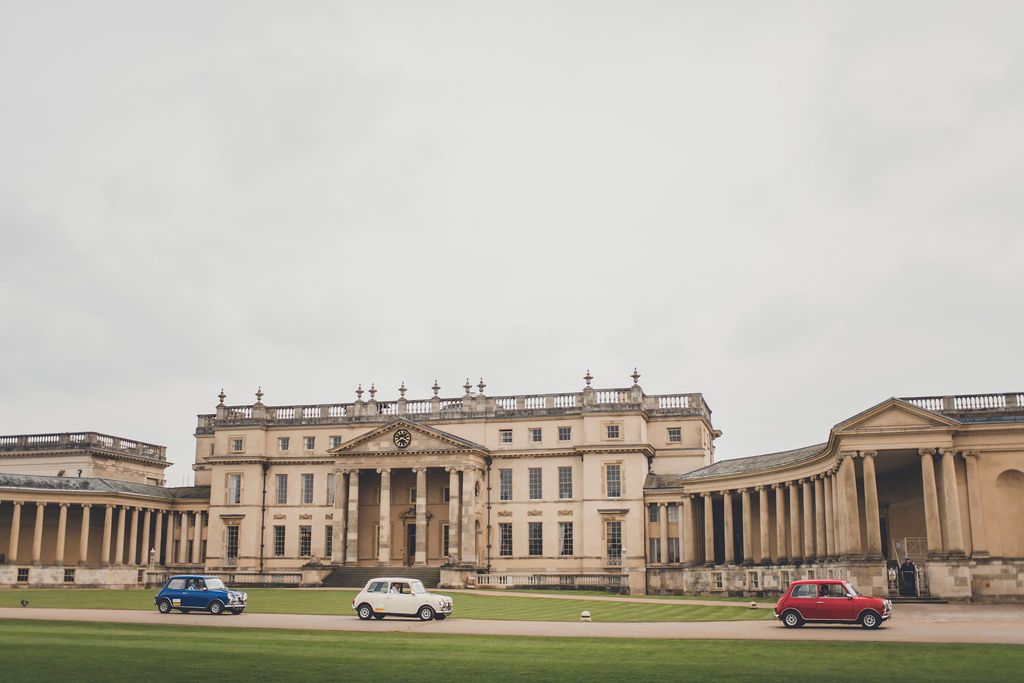
Obviously, we couldn’t be setting explosives off during an exam so we had to rush and film the whole sequence as quickly as we could. After disconnecting the smoke alarms, luckily, we managed to get it in the first shot which I was thrilled with, but we needed a way for the doors to open after the explosives had gone off. We had a gadget for this but it failed last minute, so in the end, the doors are simply swung open by two of the stunt drivers lying down, out of shot. Nothing like having to come up with something on the spot.
There was also the jump over the bridge that we weren’t supposed to do because the health and safety chap had said that ‘we can’t have wheels leaving the ground’. Our plan was to shoot super low and see the weight of the cars lift off of the suspension.
After the first attempts Paul mentioned that it was a natural feeling jump and that he could probably get some air on it. So, he did it a little bit faster and got about an inch of lift at around 45mph. I then spoke to the Headmaster and mentioned that Paul thinks that if he can go 60mph then he reckons it’ll look really good. He told us to ‘go for it’ and the result was the Minis lifting off beautifully with them landing back down naturally, without any scraping of bumpers. It was the perfect speed and jump and it looks great.

Paul’s drivers were brilliant. They knew where to put the cars for the camera and included some added bonuses like a J-turn in the reversing sequence. All good things are spontaneous.
So you did that for Hagerty and I know you work a lot with James Mitchell at Pendine Historics & Dylan Miles, so do you see videography playing an ever increasing part in the process of selling a car?
Personally, I remember videos more than I do articles, maybe that’s just because of the industry that I work in, but also a video will sit on YouTube forever. A lot of people forget about that when they want a film made just to get rid of the car once, but actually that video will still be watched by people once that car has been sold 6 or 7 times over.
Whatever the film is, whether it’s a cinematic piece or a serious documentary, it’s essentially another chapter in the history of a car, albeit in digital form. You can communicate things like the sound of it, and if you can just get a little bit of the ownership experience or personality of the car across through film then it’s a positive in my mind. I’m not sure if it’s going to be the go-to sales medium because it can be expensive, but video is increasing in general and a highly effective marketing tool.
That’s true – most of the way that people are consuming media these days and increasingly in regard to classic cars, is through video. To that end, do you have any advice for someone who's looking to pursue a career in automotive filmmaking? And to what degree do you think that the democratisation of technology, from drones to 4K or 8K cameras, is a help or a hindrance? Do you think that people focus too much on the technology rather than the ideas or skills?
Certainly not at the beginning. I think it’s great that you can buy a camera for £500 and make a full film with it. That kind of accessibility is going to be what helps drive people and allows them to develop their passions. It’s also brilliant that they’ve got an instant way to release it with the likes of Instagram and YouTube. Imagine how much more difficult it would have been 50 years ago to do that. Now, not only can you create the content yourself, but you can release it as well. You can make an Instagram channel and start messaging people saying, ‘hey, can I come film your car?’, which is great and essentially how I got started as well. I mean, what does an owner lose from it, maybe half a day of their time? Someone comes to shoot their car and it’s a win-win.
It’s a passion driven industry, which helps everything along because the person who bought the camera and wants to start filming is passionate and the person selling the cars, especially in the niche historic race car industry, is also doing it because it’s their passion.
Thank you for your time today George. To end on, we’ve got a couple of quick fire questions.
Classic or modern cars?
It’s got to be classic for me.
We know you’ve got an SAS quad bike as a camera rig, but what is your ultimate camera car?
I follow so many Instagram accounts which post pictures of tracking rigs and stuff, which is just tracking car porn. I don’t think you could beat an M3 with a Russian Arm.
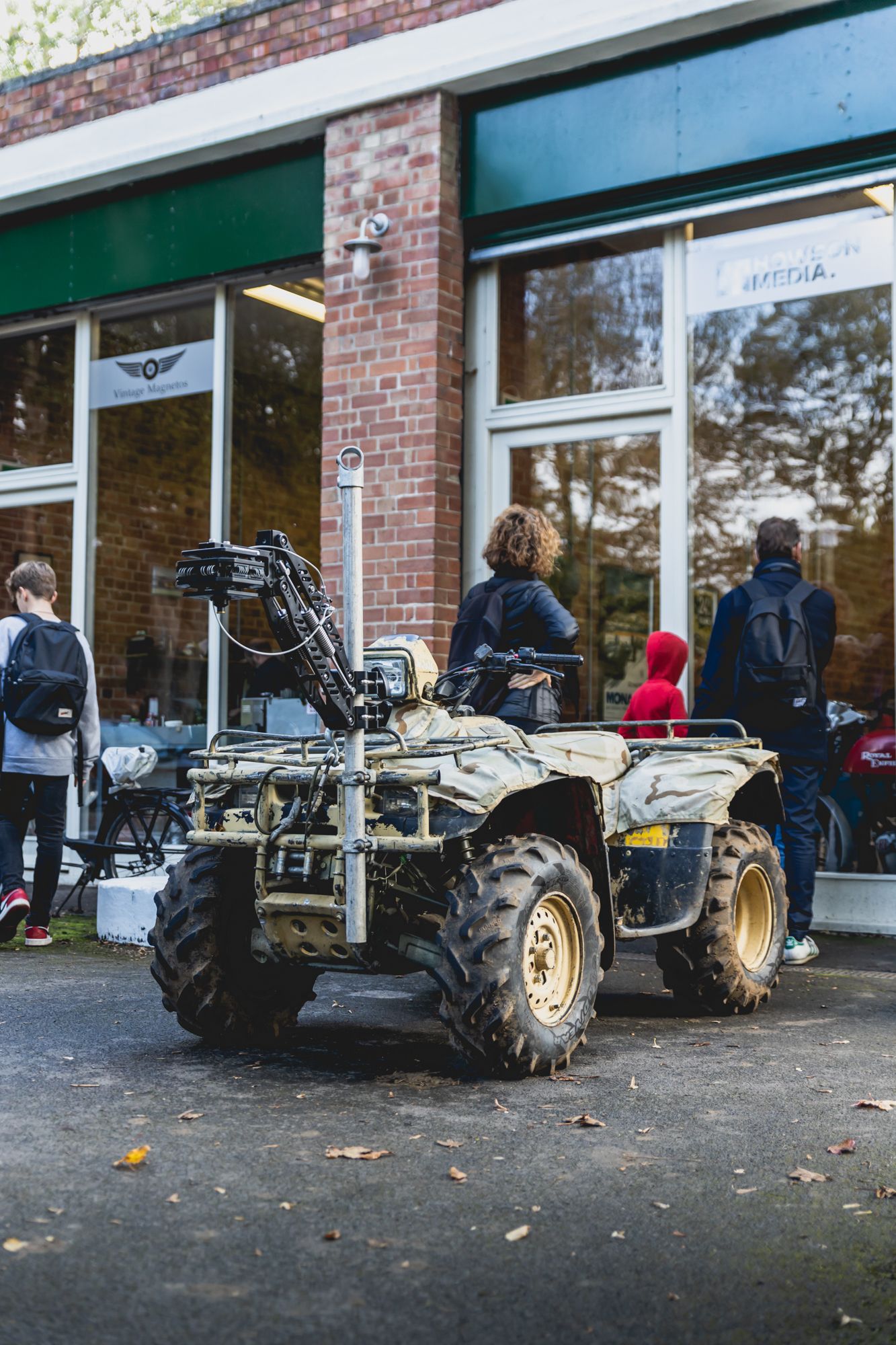
Car you’ve always wanted to film?
I’ve always wanted to film a really raucous sixties Le Mans car, like a Lola T70. I’ve got a hankering for them. They’re just bonkers. Obviously a Ferrari 250 LM or something as well. I love that era of Le Mans cars.
Location you’ve always wanted to film at?
I'd love to go and film a properly fast lap of the Nürburgring or Spa. Try and think of a cinematic way of shooting a really iconic car going quickly around a circuit like that. I love the idea of going over there and having a week to just figure out a new way of trying to film something like that and experimenting with different cameras.
What’s in the garage at the moment?
I’ve got a manual E46 M3 in Carbon Black with what I call the ‘Grandad spec’ because it’s got the smaller wheels, never been touched, no welded diffs or tinted windows. Then there’s also my dark blue 1967 Jaguar MK II, which I love, as it epitomises the 1960s to me.
Money no object, what one car would you have?
James Mitchell at Pendine Historic Cars had a dark maroon Aston Martin DB4 in years ago and I thought it was just the most beautiful bit of kit. I could do with that, but money no object, I would really have to go for a DB4 GT. I love them, they’re just the coolest things ever. If you’re only allowed 1 car you need something that is halfway between the track and the road so that’s the one you want.
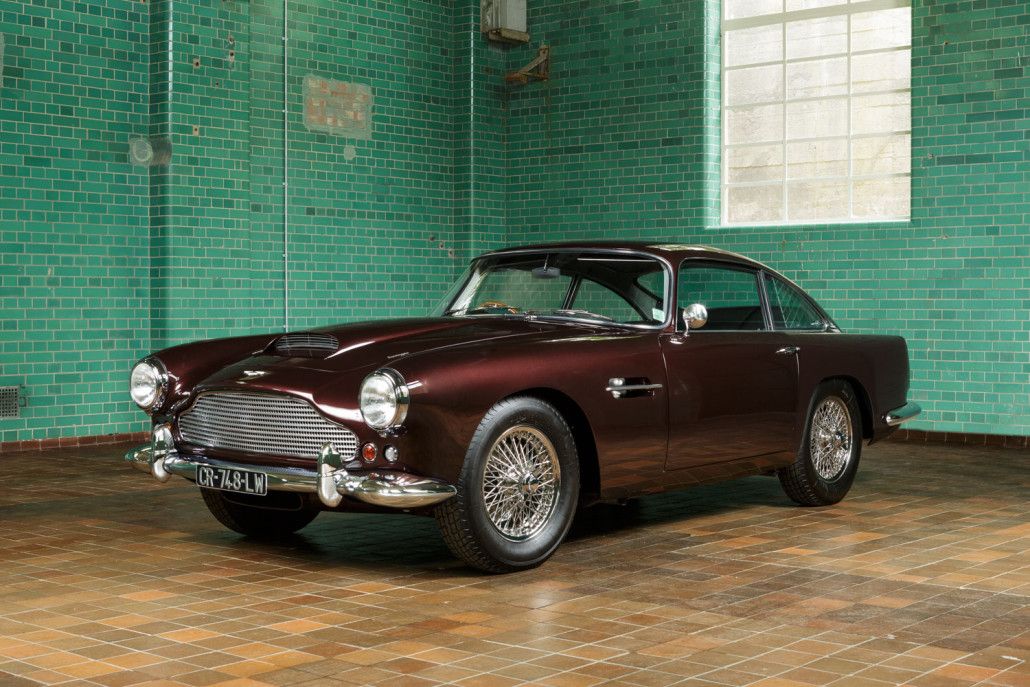
George Howson's work can be found at the following links;
